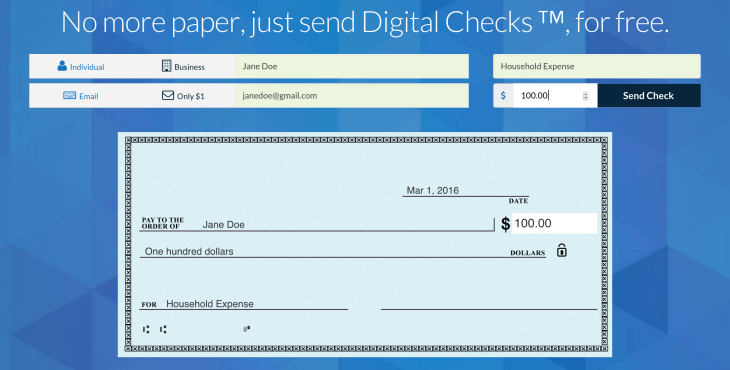You need a steady stream of cash inflows to operate your business, and monitoring accounts receivable is a part of the cash management process.
- Checkbook 2 6 3 – Manage Personal Checking Accounts Payable Accounts
- Checkbook 2 6 3 – Manage Personal Checking Accounts Payable Receivables
This discussion provides an accounts receivable definition, and explains where the balance is posted in the financial statements. You'll read about account receivable turnover, the aging schedule, and how to increase cash flow.
What are accounts receivable?
The definition of accounts receivable is the dollar amount of credit sales that are not collected in cash. When you sell on credit, you give the customer an invoice and don't collect cash at the point of sale. Accounts receivable differs from accounts payable.
To write a check: Enter the date at the top of the check.; Write the name of the company or person you are paying money to in the Pay to the Order of line.; At the end of the Pay to the Order of line, write the number amount of the check (for example, $25 or $48.28).; On the dollars line, write the check amount in words.This confirms the number amount (for example, forty-eight dollars and 28/100). Microsoft RealWorld (2) Open Systems (OSAS) (1) Deltek GCS Premier (1) Costpoint 3.0 and Greater (1) Costpoint Version 6 & Higher (1) Sage MAS 500 (1) DacEasy Accounting for DOS (1) Timberline Gold Standard (1) Timberline Timberline Office (1) show all. Checkbook software can be a great way to get your finances in order. This software is designed to import and manage your bank account information for budgeting and accounting purposes. Popular for personal or small business use, checkbook software is helpful for a number of financial needs. Tabs3 Accounts Payable v8-12 (4) Microsoft Dynamics GP/Great Plains Versions 8,9,10 (4) Tabs3 Trust Accounting v8-12 (4) Solomon (3) Juris (3) Peachtree Versions 2006 & Newer (2) Tops 2000 (2) Timberline Gold Standard (2) Deltek GCS Premier (2) Costpoint 3.0 and Greater (2) DAXKO Accounting (2) Timberline Timberline Office (2) Costpoint Version.
What is the difference between accounts payable and accounts receivable?
The accounts payable balance is the total amount of unpaid bills owed to third parties. The receivable account, on the other hand, represents amounts your business is owed.
Is accounts receivable an asset account? What about accounts payable? To understand the difference in these accounts, you need an overview of a company's balance sheet.
Balance sheet
A balance sheet presents a company's financial position at a specific date. It reflects the firm's assets, liabilities, and equity balances. Here are the components that make up a balance sheet:
- Assets: What your business owns. Assets are resources used to produce revenue, and accounts receivable is an asset balance.
- Liabilities: What your business owes to other parties. Liabilities include accounts payable and long-term debt.
- Equity: Equity is the difference between assets and liabilities, and you can think of equity as the true value of your business.
All companies should use the accrual basis of accounting to create the financial statements.
Accrual accounting
The accrual basis posts revenue when it is earned, and expenses are posted when they are incurred. Using this method matches revenue earned with the expenses incurred to generate the revenue, and the process presents a more accurate view of your profitability. The income statement is more reliable when you use the accrual method.
To recognize as expense before cash is paid, businesses increase the accounts payable balance. Noiseless 1 3 0. In a similar way, firms increase accounts receivable when revenue is earned before cash is received.
It's important to note that accounts receivable is an asset account, and not a revenue account. You'll find accounts receivable posted with other current assets.
How to find accounts receivable
Current assets include cash, and assets that will be converted into cash within 12 months. Current assets include these balances:
- Cash: The total amount of money on hand.
- Accounts receivable: The amount that your customers owe you after buying your goods or services on credit.
- Inventory: Items purchased for resale to customers.
- Prepaid expenses: Expenses you've paid in advance, such as six months of insurance premiums.
- Investments: Money-market account balances, stocks, and bonds. Some investments may be categorized as long term, but most are short-term assets.
- Notes Receivable: A loan to an outside party that will be paid within 12 months.
Current liabilities include accounts payable, and the portion of long-term debt that must be paid in the next 12 months. If you owe $3,000 in principal and interest on a bank loan within a year, the amount is a current liability.
Current asset less current liabilities equals working capital, and every business needs to generate enough in current assets to pay current liabilities. Financially sound companies have a positive working capital balance.
Posting accounts receivable transactions is a routine task that you must perform each month.
Accounts receivable- an example
Company bookkeeping may require your firm to post dozens of receivable transactions each week. You need a clearly stated process to post accurate data.
Here's a receivable example: You manage a tree service company, and you bill customer Smith $500 for removing a tree on March 25th. The customer does not pay immediately. Here's the journal entry to record the sale in general ledger:
Checkbook 2 6 3 – Manage Personal Checking Accounts Payable Accounts
March 25th
Debit #3000 accounts receivable $500 (increase)
Credit #7000 revenue- tree removal $500 (increase)
(To record tree removal revenue and to increase accounts receivable)
Both accounts receivable and revenue are increased.
When Smith pays the invoice April 6th, your tree service company posts this journal entry: https://herenload708.weebly.com/slots-plus-no-deposit-bonus-codes-2018.html.
April 6th
Debit #1000 cash $500 (increase)
Credit #3000 accounts receivable $500 (decrease) Playtika rewards code.
(To remove the accounts receivable balance and to record the cash payment)
The cash is received in April, but the revenue is correctly recorded in March. Using accounts receivable posts the revenue in the month earned, and your accounting records are consistent with the accrual basis.
Liquidity is defined as the ability to generate sufficient current assets to pay current liabilities, such as accounts payable and payroll liabilities. If you can't generate enough current assets, you may need to borrow money to fund your business operations.
Checkbook 2 6 3 – Manage Personal Checking Accounts Payable Receivables


Managing accounts receivable- why it matters
Firms that don't closely monitor accounts receivable and enforce a formal collection policy may not generate sufficient cash inflows to operate. If you have to borrow from a line of credit, you'll incur interest costs. Well-managed companies minimize borrowing costs.
Your accounting software should provide an aging schedule for accounts receivable, which groups your receivables based on when the invoice was issued. You should monitor this report and implement a collections process to email and possibly call clients to ask for payment.
The most useful tool for monitoring receivables is the accounts receivable turnover ratio.
Accounts receivable turnover ratio- what it is and how to calculate it
Live home 3d pro 3 6 2010. No small business can survive unless it can collect sufficient cash to operate, and the turnover ratio measures how quickly a firm collects cash from credit sales. The higher the ratio, the more better. The ratio is defined as:
(Net credit sales / average accounts receivable).
Net credit sales means that all returned items are removed from the sales total. Average accounts receivable is the (beginning balance + ending balance)/2. The period of time can be a month or a fiscal year.
The goal is to increase the numerator (credit sales), while minimizing the denominator (accounts receivable). In a perfect world, a business can increase credit sales to customers who pay faster, on average. As the ratio gets larger, the firm collects more cash over time.
A good turnover ratio depends on your industry. A grocery store or restaurant serves customers who pay by debit card or credit card immediately. Businesses that sell 'big-ticket items', such as airplanes, may not receive payment for months. To assess your performance, compare your turnover ratio to other firms in your industry.
The accounts receivable aging schedule separates receivable balances based on when the invoice was issued.
What is an accounts receivable aging schedule?
This report groups your accounts receivable balances based on the age of each invoice. A typical aging schedule will group outstanding invoices based on 0 to 30 days, 30 to 60 days, etc. The goal is to minimize the dollar amount of receivables that are old, particularly those invoices that are over 60 days old.
Your aging schedule also depends on your industry. Firms that are typically paid over a period of months will have a larger dollar amount of receivables in the 60-day category. Trackgod vst. This is another report that should be compared to industry averages.
You can use a number of strategies to increase cash collections and reduce your receivable balance.
Tips for improving accounts receivable
Create a formal, written policy for collections, and enforce the policy.
For example, you may email every customer when an invoice is later than 30 days, and call each client when an invoice is over 60 days old. If you enforce a policy, people will either start to pay you on time, or stop doing business with you (which may be fine, if they always pay late). Some firms charge late fees after a specific due date, and include the terms of the fee on each invoice.
You may have some uncomfortable conversations, but it's better to have them sooner than later. If you're diligent in the collection process, you can avoid hiring a collection agency or an attorney to pursue collections on your behalf.
Offer your clients a discount (1% to 2%), if they pay within 10 days. You'll lose some revenue with these payment terms, but you'll collect some cash faster.
Automate the invoicing process. Using automation will reduce the risk of errors, and recurring invoices can be processed in far less time. Emailing invoices, and providing an online payment option, encourages customers to pay immediately, which speeds up the cash collections. Best of all, invoice automation makes the buying process easier, and improves the customer's experience with your company.
Accounts receivable balances that will not be collected in cash should be reclassified to bad debt expense.
Managing bad debt
The easiest way to handle bad debts is to use the direct write-off method. When you know that a bill will not be paid, you reclassify the receivable balance to bad debt expense.
Let's assume that your tree service company has a $2,000 balance owed by Jones Manufacturing. On April 30th, you find out that Jones has declared bankruptcy, and that your invoice will not be paid. You post this entry:
April 30th
Debit #6500 bad debt expense $2,000 (increase)
Credit #3000 accounts receivable $2,000 (increase)
(To recognize bad debt expense)
The allowance for doubtful accounts is a more complex method used to post bad debt expenses. Keep the process simple and use the direct writeoff method.
The final step to managing accounts receivable is to write everything down.
Document your process
Every business should maintain a written procedures manual for the accounting system, and the manual should include specific procedures for managing accounts receivable. A procedures manual ensures that routine tasks are completed in the same manner each time, and the manual allows your staff to train new workers effectively.
Use a documented process to monitor accounts receivable, and to increase cash collections, so you can operate your business with confidence.
